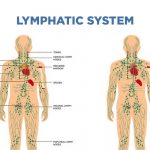Lower Back Pain When Bending Over: Symptoms and Treatments

Pain in the lower back that occurs from sitting or bending over can have a significant influence on a person’s daily activities. The vast majority of us may find that we are unable to complete some activities as a result of it, including cleaning, sitting, working, and enjoying straightforward pastimes.
Lower back pain when bending over is one of the most common types of pain that people feel, and it is the third most popular reason for people to visit their doctors. According to some estimates, up to eighty percent of adults will experience lower back pain when bending over at some point in their life.
Only around 25 percent to 30 percent of those who are affected by this problem seek medical assistance. Some people explain away the discomfort by calling it a common ache. The majority of the time, lower back pain when bending over is simply the outcome of ordinary activities and the decisions that people make. The challenge lies in determining when the discomfort should be addressed by a medical professional.
Do vibration plates work for back pain?
In the past, whole-body vibration caused by occupational exposure has been identified as a potential contributor to low back pain (LBP). Previous research has shown that whole-body vibration, also known as WBV, is a contributor to low back pain (LBP) in a variety of sedentary jobs that include the use of machines and entail repetitive vibration.
However, in the past ten years, WBV has gained popularity as a treatment for low back pain that is both safe and effective. In spite of the fact that WBV is becoming increasingly popular in clinical practice, this comprehensive review of the research literature found only two studies that investigated the effectiveness of WBV as a treatment option for LBP.
Furthermore, an evaluation of the quality of these studies revealed several methodological problems that may have caused their findings to be skewed in one direction or another. Although there is growing evidence that WBV is useful in treating various medical disorders, the data for WBV’s efficacy as a treatment for LBP is still inconclusive.
Can vibration help a pinched nerve?
Your muscles can be made to contract and relax with the help of whole-body vibration therapy, which makes use of fast vibration force. These short, intense contractions of the muscle cause tissue stimulation, which in turn leads to increased blood flow and an improvement in muscular tone.
There may be observable improvements to both your spine and your joints after undergoing vibration therapy. A little time spent on a vibrating platform can provide relief from chronic pain, help muscles that have been stiff, and soothe nerves that have become irritated as a result of compression. Strong vibrations work on the tendons, ligaments, muscles, and discs all at the same time to provide a more complete treatment.
Why does my lower back hurt while bending over?
In the event that bending over causes pain in your back, you should evaluate how severe the discomfort is. There’s a good chance that the ache you’re feeling is the result of a muscular spasm or strain, even if it’s only slight. You may have a herniated disc or other back injury if you’re in a lot of discomfort.
Herniated disc
There are several components of the spine, such as vertebrae and discs between them. When a disc slips, the jelly-like center of the disc protrudes, putting pressure on the spinal nerves in the area. Serious stabbing pain is a common symptom of a slipped disc.
After roughly six weeks of treatment with rest, nonsteroidal anti-inflammatory drugs (NSAIDs), and physical therapy, a herniated disc often presents less of a problem. When conservative treatments have failed, your doctor may suggest injecting steroids into the epidural area around the nerve to reduce inflammation and alleviate pain if the discomfort has persisted for more than six to eight weeks. Your doctor may recommend surgical intervention if your symptoms persist.
Spondylolisthesis
When one vertebra slips forward on top of the one below it because of injury, this is called spondylolisthesis. Spondylolisthesis, caused by untreated spondylolysis, is more common in younger persons who engage in activities like gymnastics and weightlifting. Spondylolysis refers to a fracture or crack in the thin, connective tissue between the upper and lower facet joints of a vertebra.
Arthritis
Arthritis is a possible cause of your lower back discomfort if you’re over the age of 55. Cartilage is what cushions and protects your joints, so as it wears down, you feel discomfort and stiffness.
Ankylosing spondylitis is a kind of arthritis that can cause the vertebrae in your spine to fuse, leading to chronic back pain. If the pain is severe, surgery may be necessary along with painkillers and anti-inflammatory drugs.
How do I relieve lower back pain when bending over?
Lessening the risk of back pain when bending over can be accomplished by the regular use of safe lifting and bending procedures. Methods of this sort include:
- Keeping the feet firmly planted shoulder-width apart to reduce the risk of falling forward.
- Not carrying objects that are too heavy, for example, by taking multiple trips and using assistive devices like rolling carts.
- Avoiding twisting the spine when bending to reach for something.
- Keeping the feet firmly planted knee-width apart to reduce the risk of falling forward.
A person who experiences lower back pain when bending over should take these self-care actions in addition to engaging in injury prevention practices:
- Take over-the-counter nonsteroidal anti-inflammatory drugs (NSAIDs) like ibuprofen or naproxen to relieve pain and inflammation.
- Resting the back for a few days, then engaging in gentle stretching exercises and low-impact physical activity, such as walking and wearing a supportive device like a back brace to prevent discomfort.
How do you tell if lower back pain is muscle or disc?
The key difference between these two varieties of back pain is the area of the back that is most severely affected by the discomfort. Because your spinal disc is positioned at the very base of your spine, you may immediately assume that you have a slipped disc if you have lower back pain when bending over.
In addition, the sufferer of each form of pain will experience it in a manner that is entirely distinct from the other. Pain in the discs will seem incapacitating and tingly, whereas discomfort in the muscles will feel like the soreness that is experienced after a workout.
Before going to the doctor, it is helpful to have this distinction clear in your mind so that you can offer an accurate description of the pain that you are experiencing. This will allow you to determine which type of pain you are experiencing. You need not worry about the specifics of your situation because your doctors are experts in the field and will be able to help you regardless of what the scenario entails.
Sources:
https://www.ncbi.nlm.nih.gov/pmc/articles/PMC3024201/
https://www.nyspine.com/blog/why-you-have-lower-back-pain-when-sitting-down-or-bending/
https://milehighspine.com/what-is-vibration-therapy/#:~:text=A%20few%20minutes%20on%20a,all%20at%20the%20same%20time.
https://www.healthline.com/health/lower-back-pain-when-bending-over#causes
https://www.medicalnewstoday.com/articles/325720#self-care-tips








